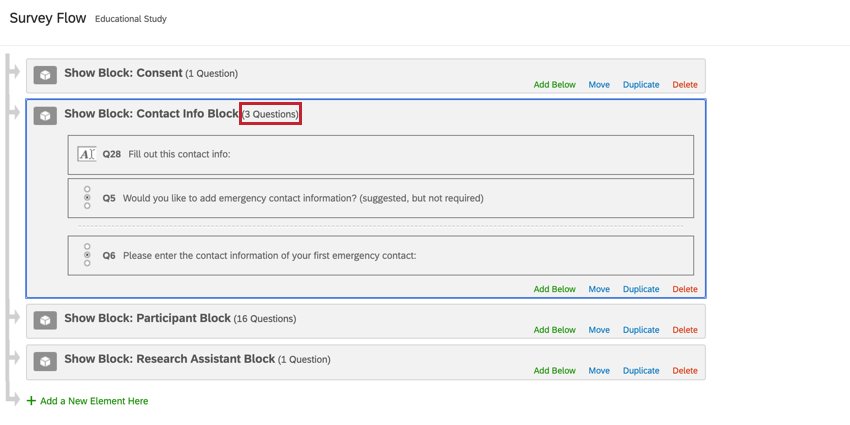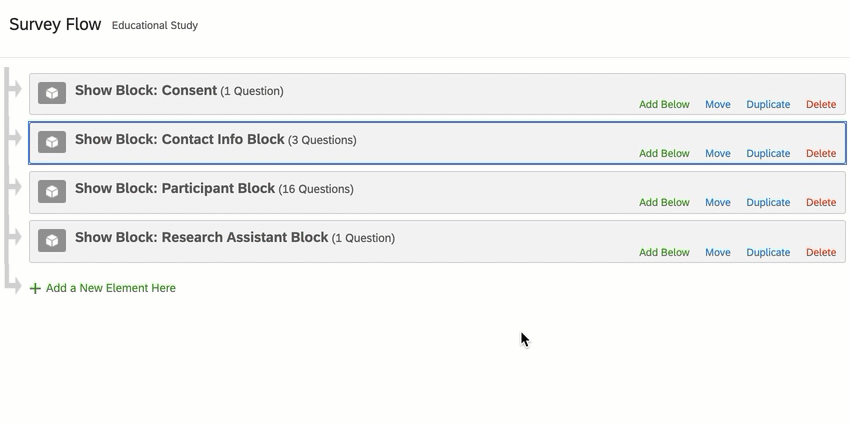Question Blocks
About Question Blocks
Blocks are used to group and organize the questions in your survey. You can think of blocks like chapters in a book; each block has its own content, and together they form a cohesive survey. Every survey has at least 1 question block. To learn more about creating and managing blocks, see block options.
Typically, questions are separated into blocks to conditionally display an entire set of questions, or to randomly present a set of questions. This can be achieved with branching and randomization options found in the survey flow.
In your survey flow, you can organize your question blocks. This lets you choose when and in what order the questions in your survey appear, allowing you to design a survey that displays exactly what you want when you want it.
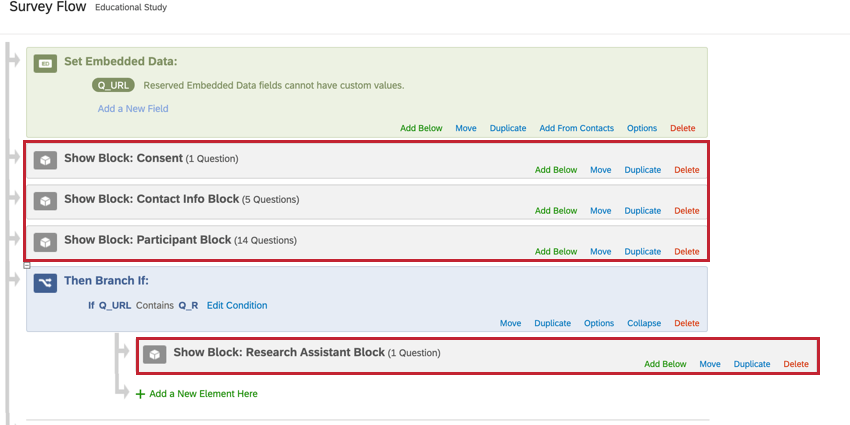
Adding a Block to Your Survey Flow
- While editing your survey, navigate to Survey flow by clicking the survey flow icon on the left navigation bar.
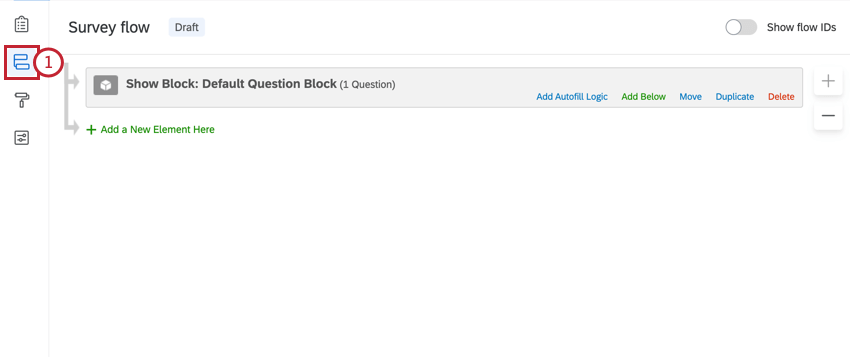
- Click Add a New Element Here or Add Below, depending on where you want the block to appear in your flow.
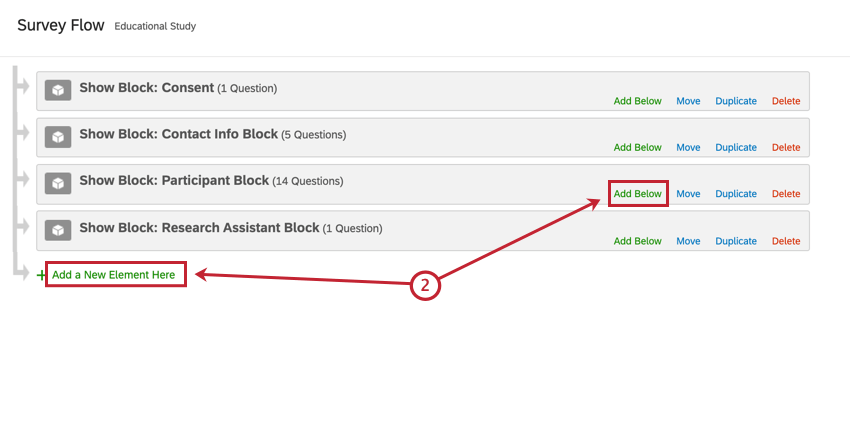
- Select Block.
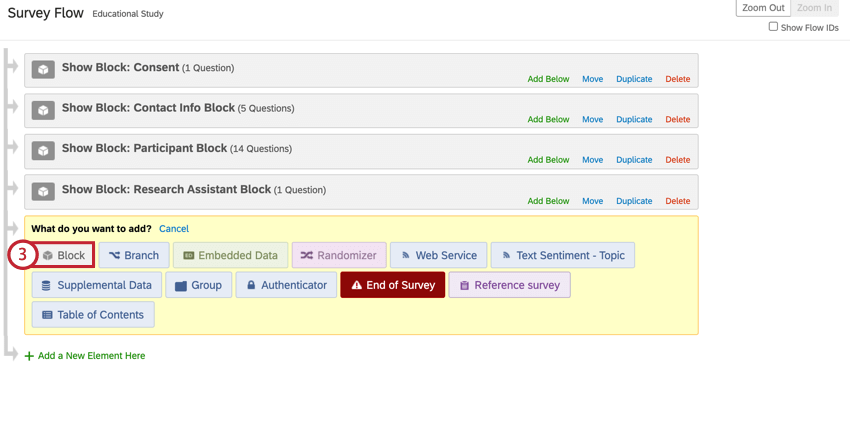
- Use the drop-down menu to select a question block.
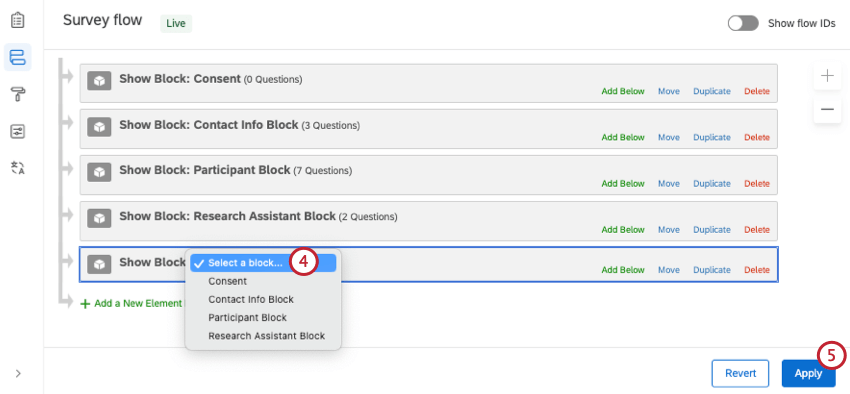
- When finished, click Apply.
Showing the Same Block Multiple Times
You can have the same block appear multiple times in your survey flow, but the questions will only appear once in your results. If a respondent sees the same block a second time in a survey, they’ll see—and be able to modify—their previous responses. While not common, this can be useful in some situations, such as having the respondent double-check their contact information before submitting their response. However, duplicating a block is most commonly used to have it shown in separate branches in the survey flow, not to show the same questions twice.
To duplicate a block in your survey flow, click Duplicate. You can then move the block to where you want it to appear in your flow.
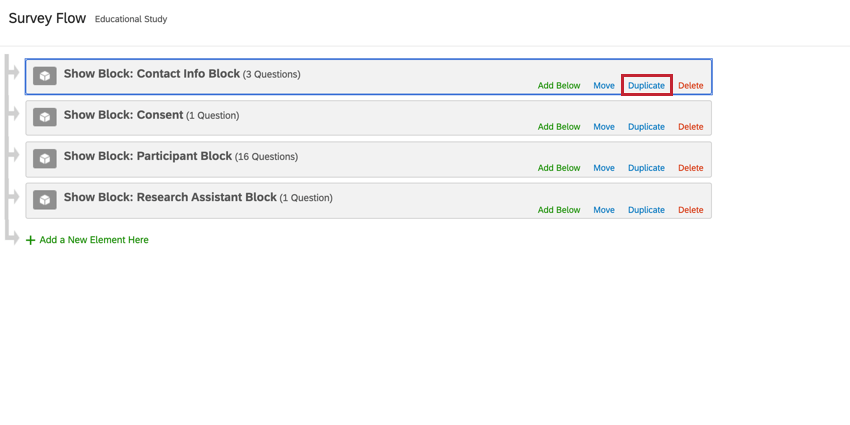
Example Use Cases
The following use-cases are for using the same block multiple times in your survey flow:
- In this example, an A/B test is being run where a respondent is randomly shown one of 2 conditions. However, the follow-up questions we ask in each condition are the same, so the follow-up question block is duplicated and included in each branch.
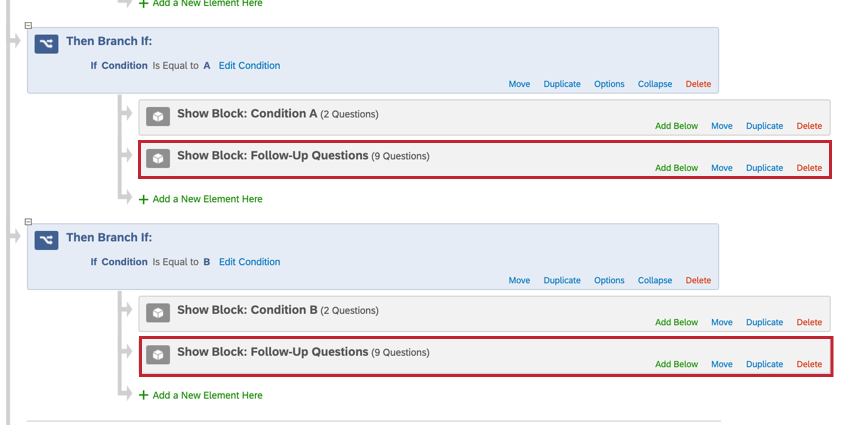
- In this example, duplicate blocks are used to artificially weight a block when using a randomizer set to evenly present elements. This will result in condition A being seen by ⅔ of respondents, while condition B will be seen by ⅓.
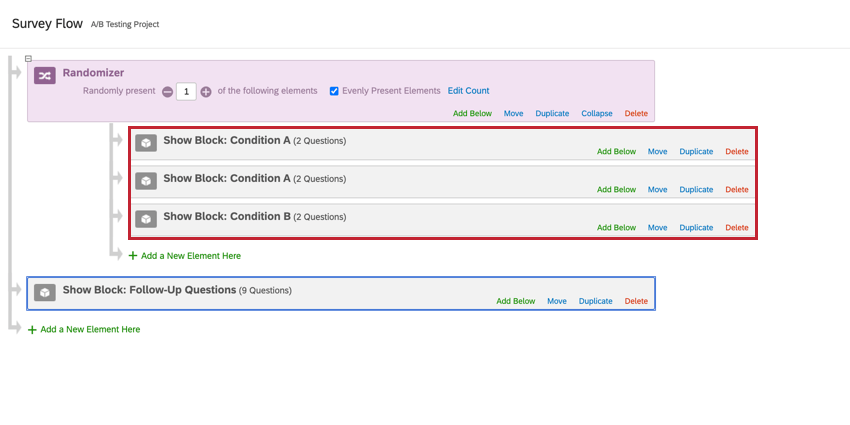
- In this example, respondents are asked to provide their contact information at the beginning of the survey. The contact information block is duplicated at the end of the survey so respondent can verify their contact information before submitting their response.
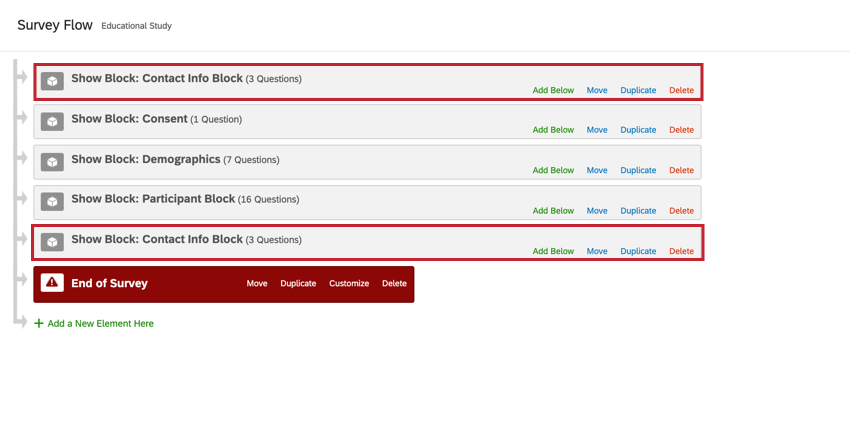
Types of Projects this Feature Is Available In
Blocks are compatible with every type of project that lets you customize a survey. This includes:
